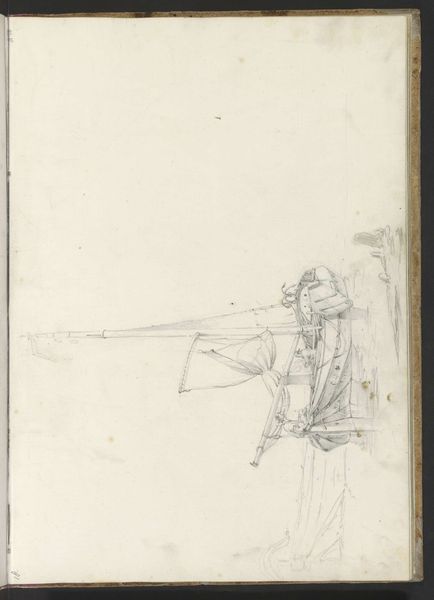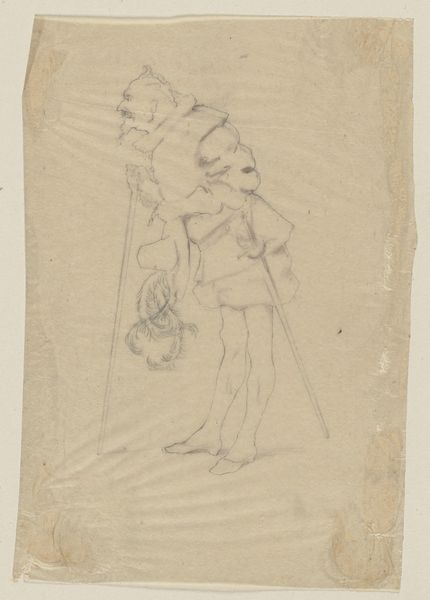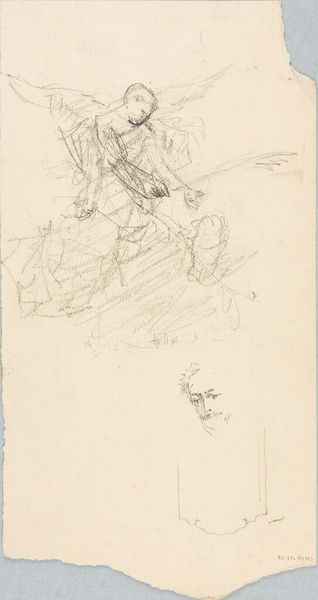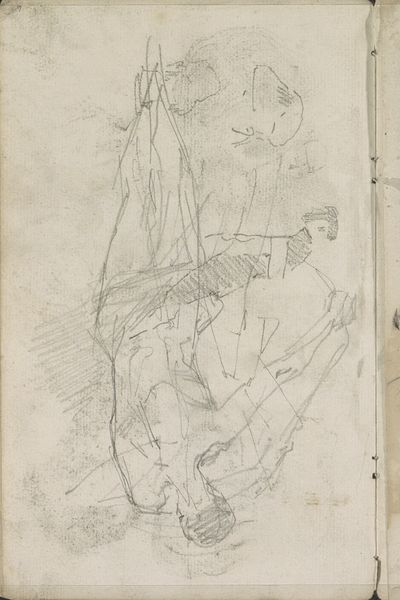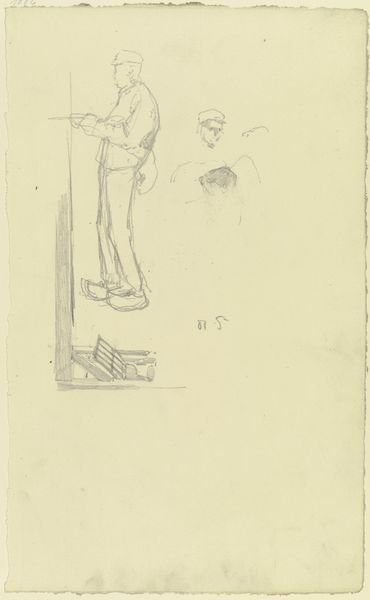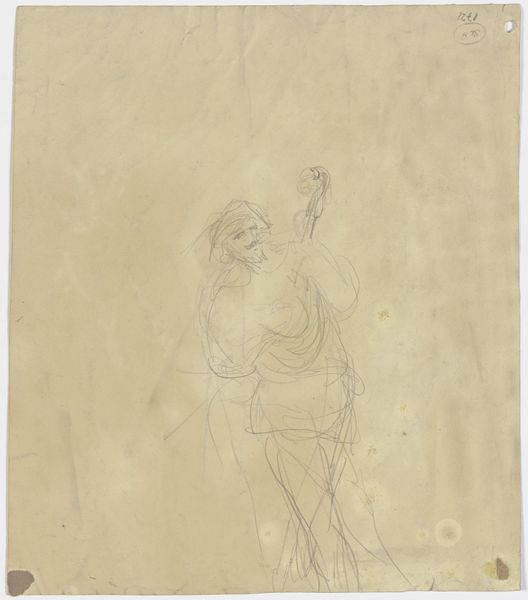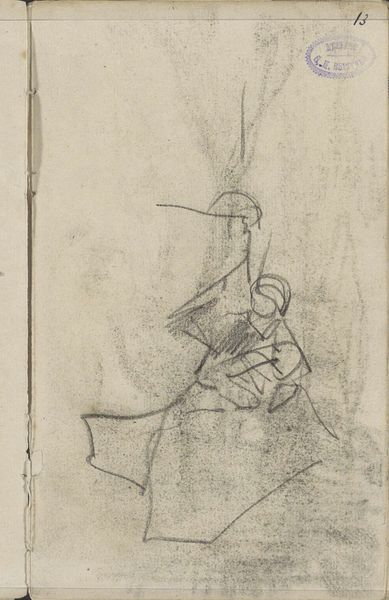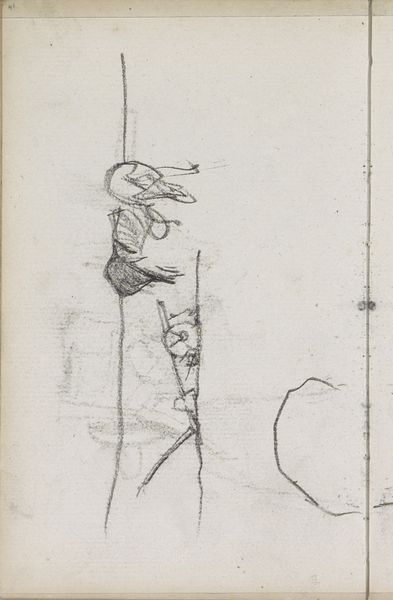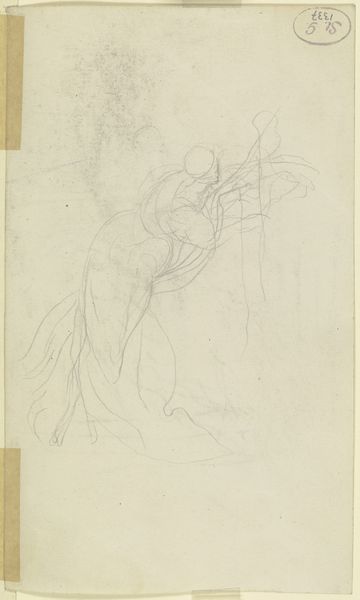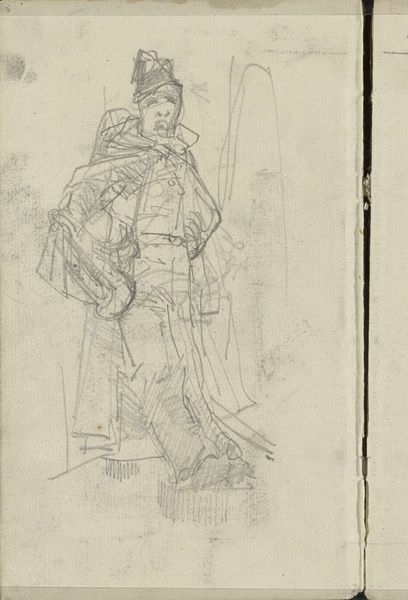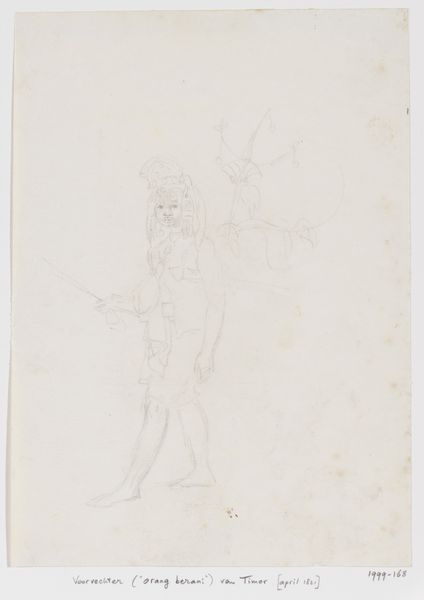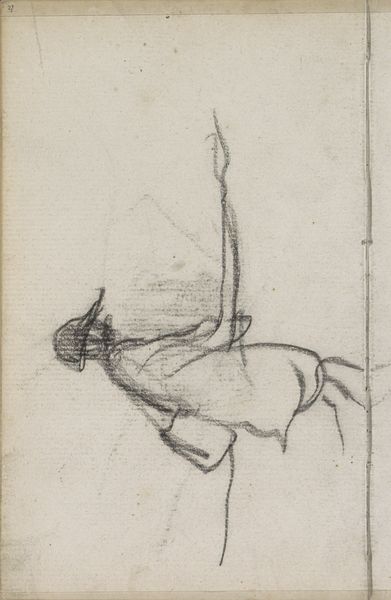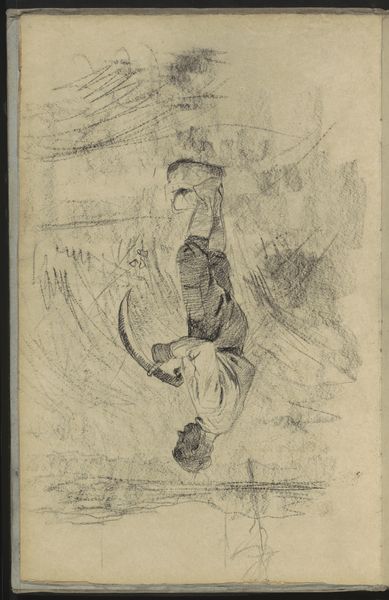
drawing, pencil
#
portrait
#
drawing
#
pencil sketch
#
pencil
#
history-painting
Dimensions: 12 7/8 x 6 15/16 in. (32.7 x 17.62 cm)
Copyright: Public Domain
Curator: Immediately striking are the light, ethereal quality of these forms and the hesitant yet confident marks outlining what looks like a military figure in different poses. Editor: That's right. This work, titled "Sketches of a Soldier," is attributed to François-Claudius Compte-Calix and dates to the 19th century. What we're looking at here is a pencil drawing on paper, part of the Minneapolis Institute of Art collection. Curator: Pencil, of course. It speaks volumes about access to materials, to readily available, relatively inexpensive methods of documentation in the nineteenth century and the increasing professionalization, but also perhaps casual engagement with military life at the time. And yet, the technique also gives a sense of vulnerability. Editor: I find that so interesting, especially when considering the potential layers of meaning inherent in military uniforms throughout history. The detail of their garb, even sketched lightly, seems meant to convey authority and allegiance to specific cultural ideals of power and duty. It projects an interesting aura even if the outlines are not assertive. Curator: Absolutely. This preliminary exploration reveals how readily and efficiently these garments can signify power but it's undermined by the almost provisional nature of the rendering itself. The softness of the pencil lines renders the figure vulnerable. It humanizes what, ideally, the soldier represents, so that what is represented here goes beyond simple power. The artist appears more invested in observing the making of power as a phenomenon. Editor: The sketch aesthetic provides something deeply psychological for me: a peek into a fleeting moment of creation. Perhaps these figures remind us that even in times of war, where these young figures take symbolic forms as they defend their allegiances, they are equally bound to be shaped by other powerful forces, and so their purpose as an agent in these violent contexts cannot truly reflect absolute and perfect agency. Curator: Your analysis highlights the interplay between medium, making, and social significance of the figures so sharply. I leave now with a much more profound insight on this figure's potential as more than just military manpower! Editor: And for me, I've really gained a deeper understanding on the emotional capacity contained within the drawing!
Comments
No comments
Be the first to comment and join the conversation on the ultimate creative platform.
